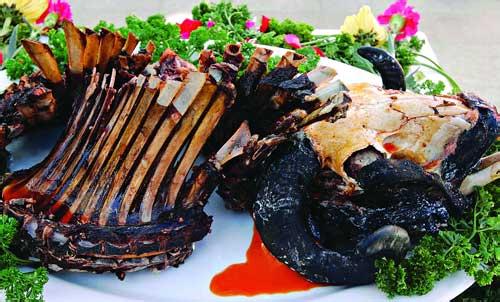 On September 2nd, People's Daily Online held an informal discussion on the Theory of Rationality - Theory and Hot-spot Face 2013 in the Theory Department of the Central Propaganda Department. The Powers Forum invited five experts to hold discussions and interpret it with the theme of "How Food Safety Is Supervised". And communication. When talking about food safety standards, Guo Lixia, director of the risk communication department of the National Food Safety Risk Assessment Center, pointed out that the formulation of food safety standards is based on the results of risk assessment, and then refers to the guiding standards given by international organizations, and is in line with our national risk management measures. Developed in combination.
On September 2nd, People's Daily Online held an informal discussion on the Theory of Rationality - Theory and Hot-spot Face 2013 in the Theory Department of the Central Propaganda Department. The Powers Forum invited five experts to hold discussions and interpret it with the theme of "How Food Safety Is Supervised". And communication. When talking about food safety standards, Guo Lixia, director of the risk communication department of the National Food Safety Risk Assessment Center, pointed out that the formulation of food safety standards is based on the results of risk assessment, and then refers to the guiding standards given by international organizations, and is in line with our national risk management measures. Developed in combination. Some netizens believe that the standard system for food safety in our country is lagging behind. Some people say that on the one hand, there are different standards for domestic production of food and exports of food, and one is when foreign countries sell food to China. The standards are not the same. In this regard, Guo Lixia pointed out that the formulation of food safety standards is based on the results of a risk assessment, and then refers to the guidance standards given by international organizations and sets standards together with our national risk management measures. Everyone needs to see that there are risk assessment results in the standard setting process, which includes determining the standards according to the dietary intake of each country. Therefore, there must be some differences in the standards of each country.
Guo Lixia introduced that it is in line with international standards. In addition, international standards are recommended, and they are recommended by member states. This is not a mandatory standard, and it is more often used in arbitrations for trade disputes. We must keep in mind that the country where each country's food is imported must meet the standards of the country. For example, our country's food exports to Japan or the United States must meet the standards of Japan or the United States. Similarly, other countries' foods that come into our country must also meet the standards of our country. Whether it is the United States, Japan, or European products, entering China must comply with China's standards.
Guo Lixia said that there are differences in the standards of each country. It is not who has high and low technology, but the difference in the dietary structure of each country. Some time ago, due to cadmium rice, everyone had an understanding of the national standard for rice cadmium. For example, in our country, the limit is 0.2 milligrams per kilogram. The limit for cadmium is 0.4. Our country is 0.2. In our country's diet structure, rice intake is a staple food, but rice intake in other countries. The amount is not so high. According to the World Health Organization, people’s cumulative intake of cadmium in excess of 2000 mg will cause harm to humans. So our country's standard 0.2 is a formal standard and cannot exceed 0.2. This calculation shows that our intake of rice and the intake of a person for the rest of their lives are also close to 2,000 milligrams. Therefore, it is no longer possible to relax the standard. In this section it seems that our country's standard is not stricter than foreign countries, but you can't use this value to say that your standards are stricter than others, but are determined by your dietary structure.
Denilco Environmental technology(Suzhou)Co., Ltd. , https://www.wflood.com